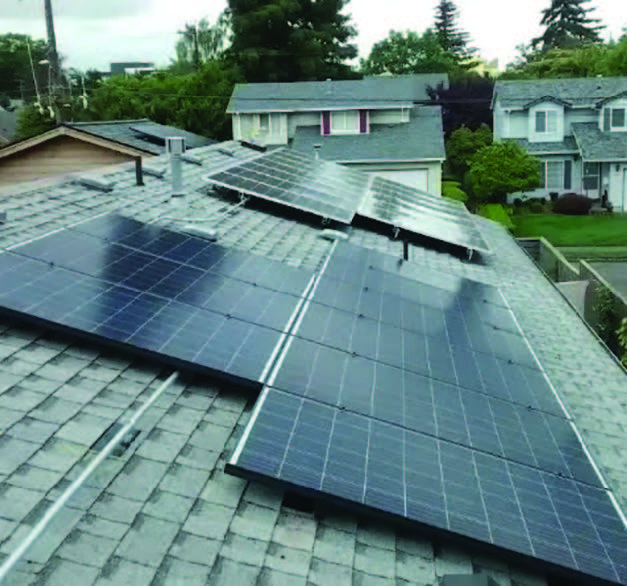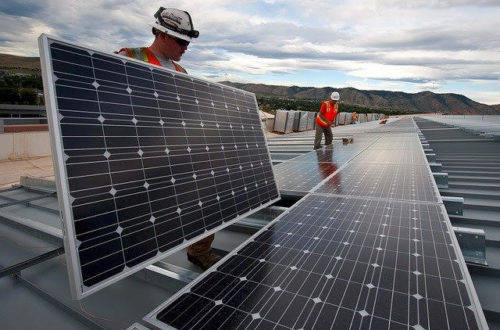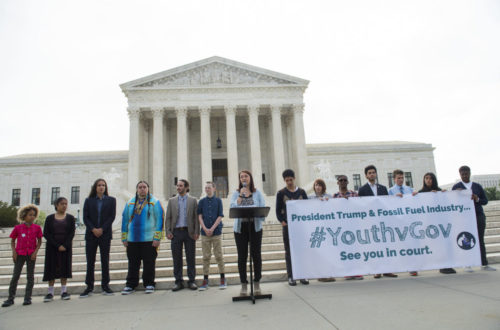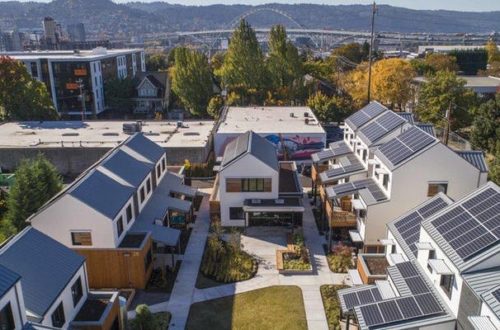This is the first article in a four-part series showing how, with modest steps and a middle-class income, a family has dramatically reduced emissions and is sequestering what remains through a small reforestation project. Their life is better for it.
Scientific consensus tells us that to stabilize the climate, we must achieve net-zero carbon emissions by 2050 (27 short years) so that any remaining carbon emissions are balanced with carbon removal.
Despite the enormity of this unprecedented challenge, there is a known and achievable way to get there. A number of organizations have developed what they call “pathways” or “pillars” for reaching net zero emissions globally. While there is some difference in how they describe the pathways, there is remarkable consistency around the core strategies for global decarbonization. The World Bank summarizes findings from International Panel on Climate Change (IPCC) models with required action in four areas: 1. Decarbonize electricity production; 2. Electrify everything and, where not possible, switch to other clean fuels like hydrogen; 3. Improve efficiency and reduce waste; and 4. Preserve and increase natural and artificial carbon removal using forests, other vegetation, and soils.
In other words, society must make everything run as efficiently as possible, so it’s easier to meet all energy demands with clean, emissions-free electricity. Any remaining emissions must be sequestered. The approach is simple, clear, and elegant. And there’s fairly widespread agreement on the principles. The challenge is doing the work on a massive scale that is undertaken by every sector of society.
While each of these four pathways must happen at a global scale, incredibly, they are also actionable at an individual level. We’ll talk about global strategy over the next several posts, but these four pathways guide our approach to individual decarbonization throughout the series.
Pathway 1: Decarbonize Electricity
Our world must run on 100% clean energy, meaning fuel that doesn’t emit greenhouse gasses. The quickest way to do this is to decarbonize electricity, which is already rapidly getting cleaner. Investments in solar and wind 20–30 years ago have paid off big-time, as they’re now the cheapest and fastest-growing sources of energy in the US and the world.
Renewable electricity production is following an S-curve of exponential growth and holds the potential to eliminate energy emissions of planet baking carbon dioxide and methane. Wind and solar are available in virtually every region of the world, and the costs of generation have fallen faster and further than any expert predicted. Electricity is also subject to less price volatility than fossil fuels because there are so many ways to produce it. Like all good investments, it’s diversified.
Some stats from the US Energy Information Administration (EIA) help illustrate this great news:
• The US electric mix currently includes 10% wind, 5% solar, 8% hydro, and 20% nuclear. Carbon-free power now makes up almost 45% of our electricity mix, up from around 30% a decade ago.
• Wind and solar provided 100% of global electricity growth in the first half of 2022.
• Emissions from electricity in the US declined by a jaw-dropping 40% from their peak in 2008 to 2020! This is due to growth in renewables and the fact that even our fossil fuels have gotten cleaner.
• Coal has fallen from 50% of our power mix in 2008 to under 20% today.
Electricity emissions fell from 2,500 million metric tons to 1,500 million metric tons in 12 years, according to the EPA.
The rapid decarbonization of electricity is some of our most hopeful news, but we can’t rest on our laurels, as we’ve still got a long way to go. We need to phase out natural gas as a source of electricity and close the remaining coal plants as quickly as possible. The clean electricity sources of the 21st century include wind, solar, geothermal, biomass, hydro, some nuclear, and emerging technologies like wave and tidal, all paired with innovative storage technologies like batteries to balance the intermittent nature of renewables.
And where we get excited is that for the first time in the history of electricity production, individuals can produce the very energy their homes and vehicles need to operate. Solar, and to some extent wind, allow people to take part in the energy transformation in ways that previous, centralized sources of electricity never allowed. Putting solar panels on your roof, subscribing to community solar, or purchasing your utility’s clean energy plan are all powerful ways to increase the pace of transformation, and we’ll provide deep dives into each option in upcoming posts.
Our family decarbonized our electric supply through a combination of 28 rooftop solar panels (7.2kW), which provide about 70% of the energy for our all-electric home; community solar through Oregon Shines, which provides about 30% of our needs; and a subscription to our utility’s green power program to cover any overconsumption beyond our estimates. Because we subscribed to solar leases for the panels on our home, our only out-of-pocket costs were repaid through tax credits and solar energy production. Community solar costs nothing upfront, and in our state of Oregon, the price for electricity from community solar costs 5% less than regular utility costs.
We’re in good company as US homeowners continue to invest in solar. In 2022, 8% of surveyed homeowners said they’d installed solar panels, up from 4% in 2016. A whopping 39% said they had seriously considered solar. This pales in comparison with Australia, however, where 25% of homes have rooftop solar. On the positive side, the solar tax credits in the Inflation Reduction Act are expected to drive solar to grow 40% faster, so this positive trend is likely to accelerate.
In short, clean electricity is perhaps the decarbonization pathway that’s closest to being realized. Its success shows how we can quickly pivot to a cleaner world with reduced emissions and pollution, in which individuals accelerate global trends and reap the financial benefits.
What’s Next
Stay tuned for three more pillars of global decarbonization and how individuals can advance them.

Joe Wachunas and Naomi Cole
Joe Wachunas and Naomi Cole both work professionally to address climate change — Naomi in urban sustainability and energy efficiency and Joe in the electrification of buildings and transportation. Their commitment to walk the walk, has led them to ductless heat pumps, heat pump water heaters, induction cooking, solar in multiple forms, hang-drying laundry (including cloth diapers), no cars to electric cars and charging without a garage or driveway, a reforestation project, and more. They live in Portland, Oregon, with their two young kids.
For more info: decarbonizeyourlife.com







One Comment
Pingback: